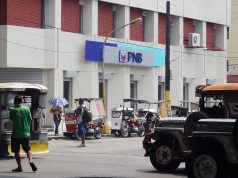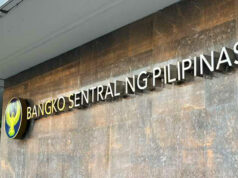Peso ends higher vs dollar on oil prices, China PMI

THE PESO closed stronger versus the greenback on Tuesday on the back of positive market sentiment due to lower oil prices, as well as an unexpected rebound in China’s factory activity.
The local unit ended trading at P50.68 against the dollar yesterday, appreciating by 28 centavos from its P50.96 close on Monday, according to data from the Bankers Association of the Philippines.
The peso opened the session at P50.85 per dollar. Its weakest was at P50.89, while its strongest showing for the day was its close of P50.68 against the greenback.
Volume of dollars traded inched up to $363.1 million yesterday from $315.35 million on Monday.
Rizal Commercial Banking Corp. Chief Economist Michael L. Ricafort attributed the peso’s strength to the decline in oil prices.
“The peso exchange rate closed stronger after global crude oil prices declined anew to linger among the lowest levels in 18 years,” Mr. Ricafort said in a text message.
Oil prices inched up slightly on Tuesday, although still near 18-year low levels, with world leaders agreeing to discuss energy market stabilization amid the falling demand due to the coronavirus disease 2019 (COVID-19) outbreak.
Reuters reported that Brent crude inched up by 0.8% or 19 centavos to $22.95 per barrel as of 0051 GMT from a $22.76 close in the previous session. Meanwhile, US crude increased by 59 centavos to $20.68 per barrel from $20.09 in its previous close.
In a phone call on Monday, US President Donald J. Trump and Russian President Vladimir Putin agreed to let their top energy officials to discuss stabilizing oil markets, the Kremlin said on Monday.
Meanwhile, a trader said the local unit was powered by better international data.
“The peso appreciated after the strong rebound in the Chinese manufacturing activity back to expansion levels,” the trader said in an e-mail.
Reuters reported on Tuesday that factory activity in China saw unexpected recovery in March, although analysts were cautious that the near-term rebound is far from an assurance that COVID-19 will not take a toll on foreign demand.
According to China’s National Bureau of Statistics, China’s official Purchasing Managers’ Index (PMI) rose to 52 in March, above the 50-point mark that separates monthly growth from contraction. This came after the 35.7 seen in February.
For today, Mr. Ricafort gave a forecast range of P50.55 to P50.85, while the trader expects the peso to move around the P50.65 to P50.85 levels. — L.W.T. Noble with Reuters



